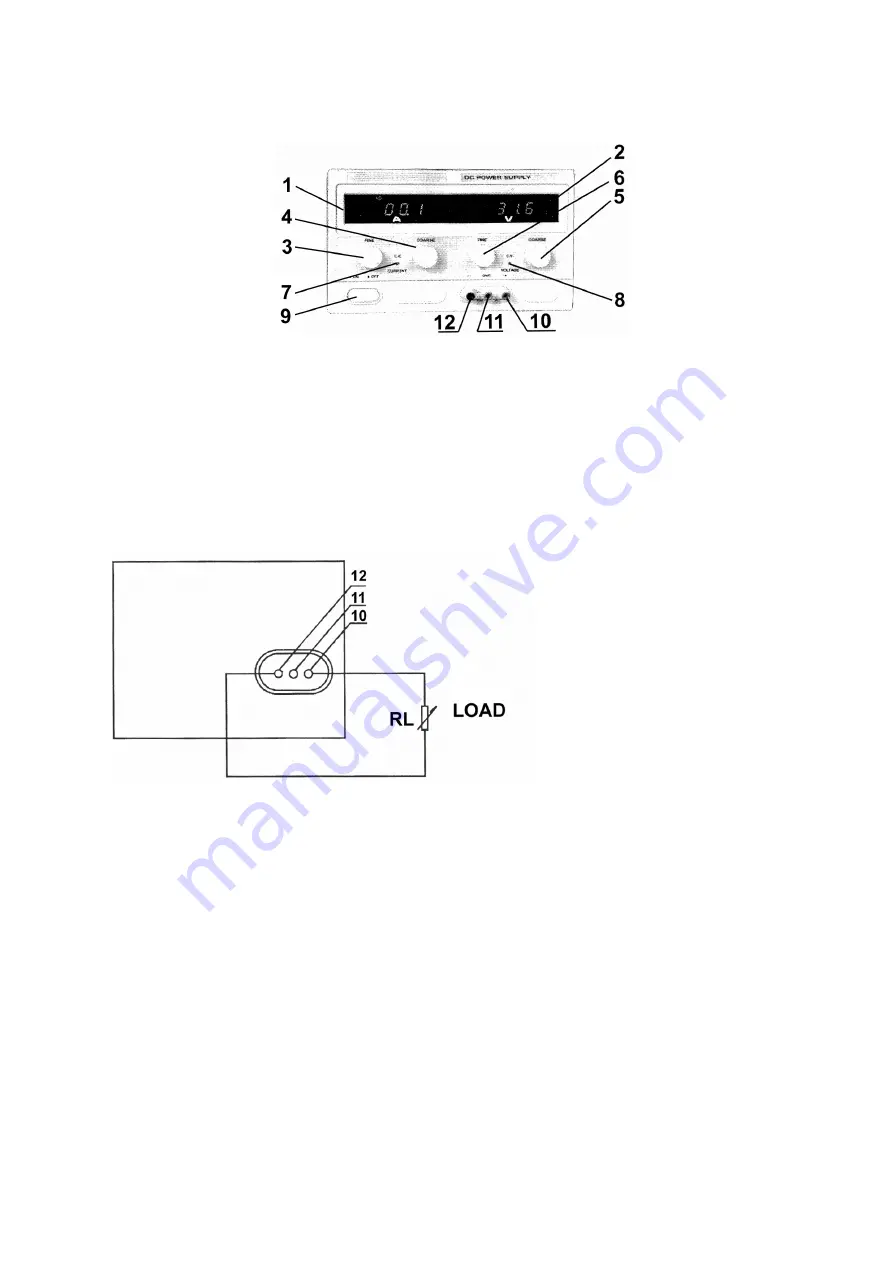
PS5005
VELLEMAN
2
(10) Output terminal (+): used for the connection of the load's positive terminal.
(11) Ground connection of the housing: the housing is grounded.
(12) Output terminal (-): used for the connection of the load's negative terminal.
3.2. Operating Procedure
1) Using the device as a C.V. source
Turn adjustments (3) and (4) to the extreme right prior to activating the device. Activate the device. Use adjustment
(5) to obtain a voltage that is close to the desired value. Consequently, you should use fine-tuning adjustment (6) to
install the exact value. The C.V. indicator comes on.
2) Connecting the Load
The load is connected as shown in the figure above. You can read the output current (1) and the output voltage (2)
from the display as soon as the device has been switched on. The C.V. indicator (8) is lit if the device is in the C.V.-
mode. The C.V. LED is off and the C.C. LED will light if the Amp display indicates a value that exceeds the installed
value. When this happens, the device will automatically go into the current-limiting mode. Install a load that will allow
the device to function normally.
3) Using the device as a C.C. source
Use the power switch (9) to activate the device. Turn adjustments (5) and (6) to the extreme right and turn
adjustments (3) and (4) to the extreme left. Connect the load. Adjust (3) and (4) until the desired current is obtained.
The C.C. indicator is now lit while the C.V. indicator is off.
4) Use of the current-limiting adjustment in the C.V.-mode
Place both of the current adjustments, viz. (3) and (4), in the max. position. You can now set the current-limiting point
arbitrarily (max. ± 5.5A). Proceed as follows : activate the device, connect a variable load and adjust the load so that
the current matches the desired current-limiting point. Meanwhile, you should also manipulate current-adjustments
(3) and (4) until the C.C. LED lights. The value on the Amp display is identical to the current-limiting point.






























